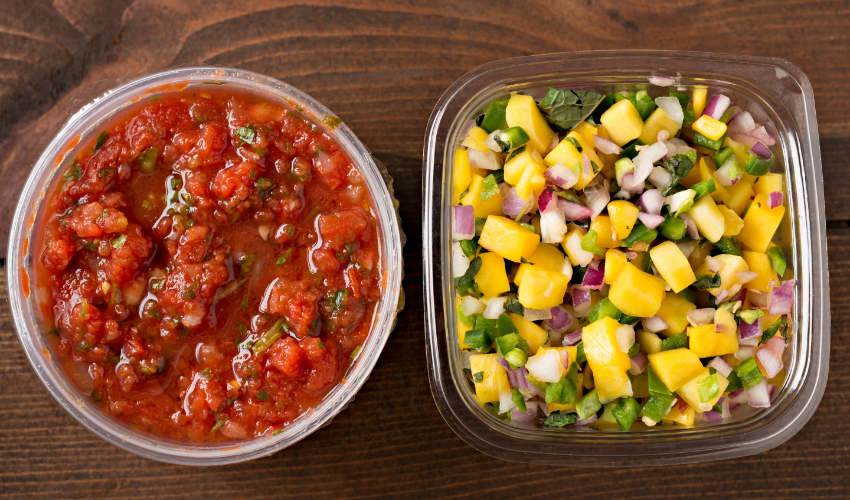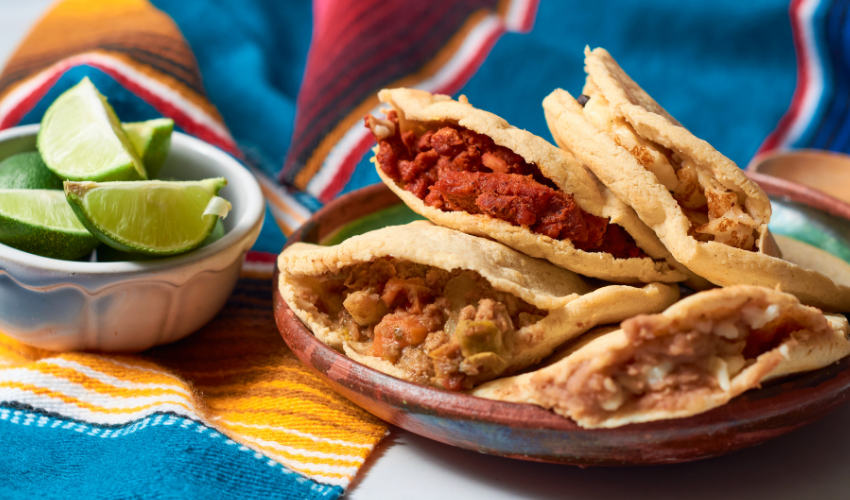Salsa, the beloved condiment made from a mixture of tomatoes, peppers, onions, and spices, is a staple in many households and restaurants around the world. With its tangy, spicy, and savory flavors, salsa can be used to add a kick of flavor to everything from chips and tacos to grilled meats and vegetables. While most people are familiar with the classic tomato-based salsa, there are many other types and flavors of salsa that are just waiting to be discovered. In this article, we’ll explore the varied world of salsas, from the classic varieties to the more exotic and lesser-known types.
What are the types of salsas?
- Classic Tomato Salsa:
This is the most common type of salsa, made with diced tomatoes, onions, jalapeño peppers, cilantro, lime juice, and salt. It’s a versatile salsa that can be used as a dip or a topping for tacos, burritos, and other Mexican dishes. - Pico de Gallo:
Also known as salsa fresca, pico de gallo is a chunky, uncooked salsa made with diced tomatoes, onions, cilantro, lime juice, and sometimes jalapeño peppers. It’s often served as a condiment with grilled meats, seafood, and vegetables. - Salsa Verde:
Made with tomatillos, jalapeño peppers, onions, garlic, and cilantro, salsa verde is a tangy and slightly spicy salsa that’s perfect for adding flavor to grilled meats, tacos, and enchiladas. - Fruit Salsas:
These salsas are made with a variety of fruits, such as mango, pineapple, or peach, and can be sweet or spicy. They’re often used as a topping for grilled meats or as a dip for chips. - Mole:
Mole is a complex sauce made with a combination of ingredients, including chiles, chocolate, and spices. It’s often served over chicken or pork and can be used as a dip for chips. - Salsa Negra:
Salsa negra, also known as black salsa, is made with dried chiles, garlic, onion, and oil. It has a smoky, slightly sweet flavor and is often used as a marinade for meats.

How to choose the types of salsas for your dish?
When it comes to choosing types of salsas for your dish, there are a few things to consider. Here are some tips to help you choose the perfect salsa:
- Consider the dish: The type of salsa you choose will depend on the dish you are serving it with. For example, a chunky pico de gallo might be perfect for tacos or grilled meats, while a smoother salsa might be better for dipping chips.
- Consider the level of spiciness: Salsas can range from mild to extra hot, so it’s important to consider the level of spiciness when choosing a salsa. If you’re serving a dish to guests, it’s a good idea to offer a mild and a spicy salsa so that everyone can choose the level of heat they prefer.
- Consider the flavor profile: Different types of salsa have different flavor profiles. For example, salsa verde has a tangy, slightly sour flavor, while fruit salsas can be sweet and refreshing. Think about the flavors in your dish and choose a salsa that will complement them.
- Consider the texture: Salsas can be chunky or smooth, and the texture can make a big difference in how it pairs with a dish. For example, a chunky salsa might be perfect for adding texture to a soft taco, while a smooth salsa might be better for topping a grilled fish.
- Experiment: Don’t be afraid to try different types of salsa to see what works best with your dish. You might be surprised at how a different types of salsa can completely change the flavor profile of a dish.

FAQs:
What are the health benefits of this types of salsa?
Salsa is low in calories and fat, and is a good source of vitamins C and A. It also contains antioxidants and anti-inflammatory properties.
What are the different levels of spiciness in salsa?
Salsas can range from mild to extra hot, depending on the type of pepper used and the amount of seeds and membranes left in the salsa.
Can I make salsa without tomatoes?
Yes, there are many types of salsa that don’t use tomatoes, such as salsa verde or fruit salsas.
What are the best peppers to use in salsa?
Jalapeño peppers are the most commonly used peppers in salsa, but other types of peppers, such as serrano or habanero, can be used to add more heat and flavor.
How long does salsa last in the fridge?
Homemade salsa can last up to a week in the fridge if stored in an airtight container. Store-bought salsa typically has a longer shelf life, but it’s important to check the expiration date before consuming.
Conclusion:
In conclusion, salsa is a delicious and versatile condiment that can be used in a variety of dishes. Whether you prefer classic tomato salsa or more exotic fruit salsas, there is a type of salsa out there for everyone. By exploring the different types and flavors of salsa, you can discover new and exciting ways to add flavor to your meals. So, the next time you’re looking to spice things up, consider trying a new type of salsa and enjoy the many flavors that this delicious condiment has to offer.






















